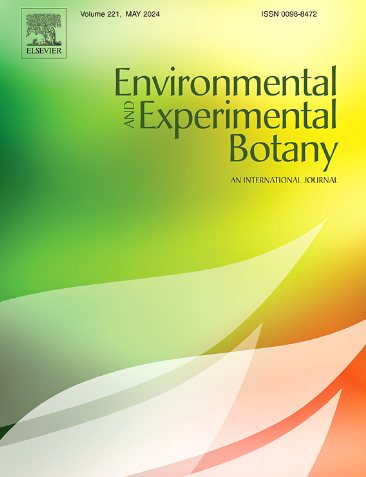Leaf chemical and structural properties govern foliar uptake of phosphorus from dust in chickpea
IF 4.7
2区 生物学
Q2 ENVIRONMENTAL SCIENCES
引用次数: 0
Abstract
Certain plant species exhibit the capability to absorb phosphorus (P) directly from dust particles deposited on their leaves, particularly in P-limited environments. However, the underlying mechanisms that enable foliar uptake of P from insoluble sources such as dust minerals remain largely unexplored. This study investigates the chemical and structural properties of chickpea leaf surfaces that influence P absorption from dust deposition. We evaluated various chickpea varieties in a series of controlled experiments where P-rich dust was applied to their shoots. The relationship between P acquisition from dust and leaf surface pH, metabolite exudation and trichome density was examined. The tested varieties displayed variability in their leaf structural and chemical properties, which led to significantly different responses to foliar dust application. The most positive dust-responsive variety ('Mekomit') demonstrated a substantial 47–169 % increase in biomass in response to foliar dust application, whereas the most negatively responsive variety ('Cr205') exhibited a 28 % decrease in biomass following application. The positive response to dust was associated with lower leaf surface pH, higher trichome density, and enhanced metabolites exudation. Notably, the positively responsive variety showed increased exudation of sugars and organic acids, predominantly oxalic and malic acids from the leaf surfaces which facilitate P solubilization. These findings underscore the remarkable capacity of certain chickpea varieties to adapt their leaf characteristics in response to P deficiency, allowing them to absorb P from otherwise insoluble sources, such as airborne dust. This insight reveals a fundamental physiological mechanism that enhances our understanding of plant nutrient acquisition strategies under challenging environmental conditions.
鹰嘴豆叶片的化学和结构特性决定了叶片对粉尘中磷的吸收
某些植物物种表现出直接从沉积在其叶片上的粉尘颗粒中吸收磷的能力,特别是在磷限制的环境中。然而,使叶片从粉尘矿物等不溶性来源吸收磷的潜在机制仍未被探索。本文研究了鹰嘴豆叶片表面化学和结构特性对粉尘中磷吸收的影响。我们对不同鹰嘴豆品种进行了一系列对照试验,在这些试验中施用富磷粉尘。研究了粉尘对磷的吸收与叶片表面pH、代谢物渗出量和毛状体密度的关系。不同品种的叶片结构和化学性质存在差异,这导致叶片对施粉的响应存在显著差异。最积极的粉尘响应品种(‘Mekomit’)在施用叶面粉尘后生物量增加了47-169 %,而最负响应的品种(‘Cr205’)在施用后生物量减少了28 %。对粉尘的积极响应与叶片表面pH值降低、毛状体密度增加和代谢物分泌增加有关。值得注意的是,积极响应的品种表现出糖和有机酸的增加,主要是草酸和苹果酸从叶片表面渗出,促进磷的溶解。这些发现强调了某些鹰嘴豆品种适应磷缺乏的叶片特征的显着能力,使它们能够从其他不溶性来源(如空气中的灰尘)吸收磷。这一见解揭示了一个基本的生理机制,增强了我们对具有挑战性的环境条件下植物营养获取策略的理解。
本文章由计算机程序翻译,如有差异,请以英文原文为准。
求助全文
约1分钟内获得全文
求助全文
来源期刊

Environmental and Experimental Botany
环境科学-环境科学
CiteScore
9.30
自引率
5.30%
发文量
342
审稿时长
26 days
期刊介绍:
Environmental and Experimental Botany (EEB) publishes research papers on the physical, chemical, biological, molecular mechanisms and processes involved in the responses of plants to their environment.
In addition to research papers, the journal includes review articles. Submission is in agreement with the Editors-in-Chief.
The Journal also publishes special issues which are built by invited guest editors and are related to the main themes of EEB.
The areas covered by the Journal include:
(1) Responses of plants to heavy metals and pollutants
(2) Plant/water interactions (salinity, drought, flooding)
(3) Responses of plants to radiations ranging from UV-B to infrared
(4) Plant/atmosphere relations (ozone, CO2 , temperature)
(5) Global change impacts on plant ecophysiology
(6) Biotic interactions involving environmental factors.
 求助内容:
求助内容: 应助结果提醒方式:
应助结果提醒方式:


